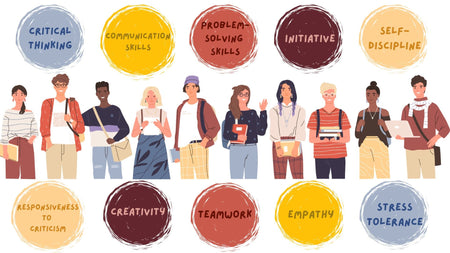Small Shifts with Big Impact: 5 Resolutions Worth Keeping
This is a time when we often consider making resolutions for the coming year. These resolutions are aspirational, reflecting our hopes and intentions for the months ahead. Unfortunately, they are also often short-lived. Resolutions can require new skills, significant life changes, and relationship adjustments. They may even mean giving up things with which we are familiar and enjoy. Consequently, within the first month or two of the new year, most resolutions have gone by the wayside.
Nevertheless, there may be changes to make and goals to achieve in the coming year that are worth our time and effort. The key is to choose carefully, focus on what can help us make progress towards who we want to be, and be ready to follow through. Of course, it helps if our resolutions do not require significant new commitments of time, new skills, or abandonment of long practiced habits.
If this situation sounds familiar, you have good news. There are meaningful resolutions you can make that do not come with significant new time commitments but pay big dividends. They do not require new skills or new habits that would be difficult to sustain. Equally important, these resolutions offer significant and sustained benefits when practiced regularly. Consider these five options that you can start today and enjoy their benefits now and throughout the new year.
Resolution #1: I will be curious.
Curiosity is an attitude as much as a behavior. Being curious positions us to pay attention, ask questions, and explore what may be new or unique. Remaining curious can be a powerful way to help us to better understand and evaluate new ideas we encounter. Curiosity can help us build relationships with others. Curiosity can even be an effective strategy for resolving conflicts we encounter. It can also be the door to continuous learning and growth.
Resolution #2: I will assume positive intentions.
When something unfortunate happens, we observe negative behavior, or are confused by what someone says, we have a choice to make. We might assume that someone intended to create a problem, behave badly, or their words were intended to hurt. Alternatively, we can assume that there may be more to the situation than we know and there is a legitimate reason for what someone said or did. The choice may matter more than we realize. When we assume negative intentions, we search for responsibility and blame. The result too often is unproductive, negative, and hurtful. When we learn the full story, we may even find ourselves apologizing for what we assumed. Assuming positive intentions, on the other hand, allows us to explore and gain understanding before deciding what to think and how to respond. Assuming positive intentions builds trust and promotes understanding—two helpful connections for the coming year.
Resolution #3: I will notice and celebrate small wins.
Small wins happen around us more often than we might realize—unless we are paying attention. In the aftermath of a resolved problem, a settled conflict, or completed task, we might quickly turn to the next issue or challenge and move on. Yet, small wins can be the fuel that keeps our energy flowing and our spirits high. Further, when we notice and celebrate small wins, they can grow and become much larger wins. Small wins can be momentum builders and confidence reinforcers. They are worth noticing and celebrating.
Resolution #4: I will be grateful.
Much like noticing and celebrating small wins, paying attention to what we should be grateful for and appreciating people who are important to us can be a powerful counterweight to what might otherwise drag us down. Incorporating gratitude into daily or weekly journaling, reflecting as we begin or end the day, or purposefully sharing gratitude in our conversations can make a surprisingly positive difference in our attitude and how we experience life. Reflecting on what is good in our lives and being thankful for people who support and love us does not have to be time consuming, but it can be life renewing.
Resolution #5: I will practice work-life balance.
There is almost always more work that could be done. We might do more planning. We might rework or tweak a project, or maybe just worry about a colleague or student. The list could go on. Finding work-life balance can become more of an art than science. But placing reasonable boundaries around work hours, setting priorities, taking regular breaks, and protecting time for family, recreation, and other personal activities can be the key to sustaining our energy, remaining motivated, and maintaining our sanity.
While these resolutions do not ask us to change major elements of our lives, they yield the greatest results when practiced regularly. With just a few weeks of practice, they can shift how we engage with others, shape our attitudes, and improve how we experience life.
















